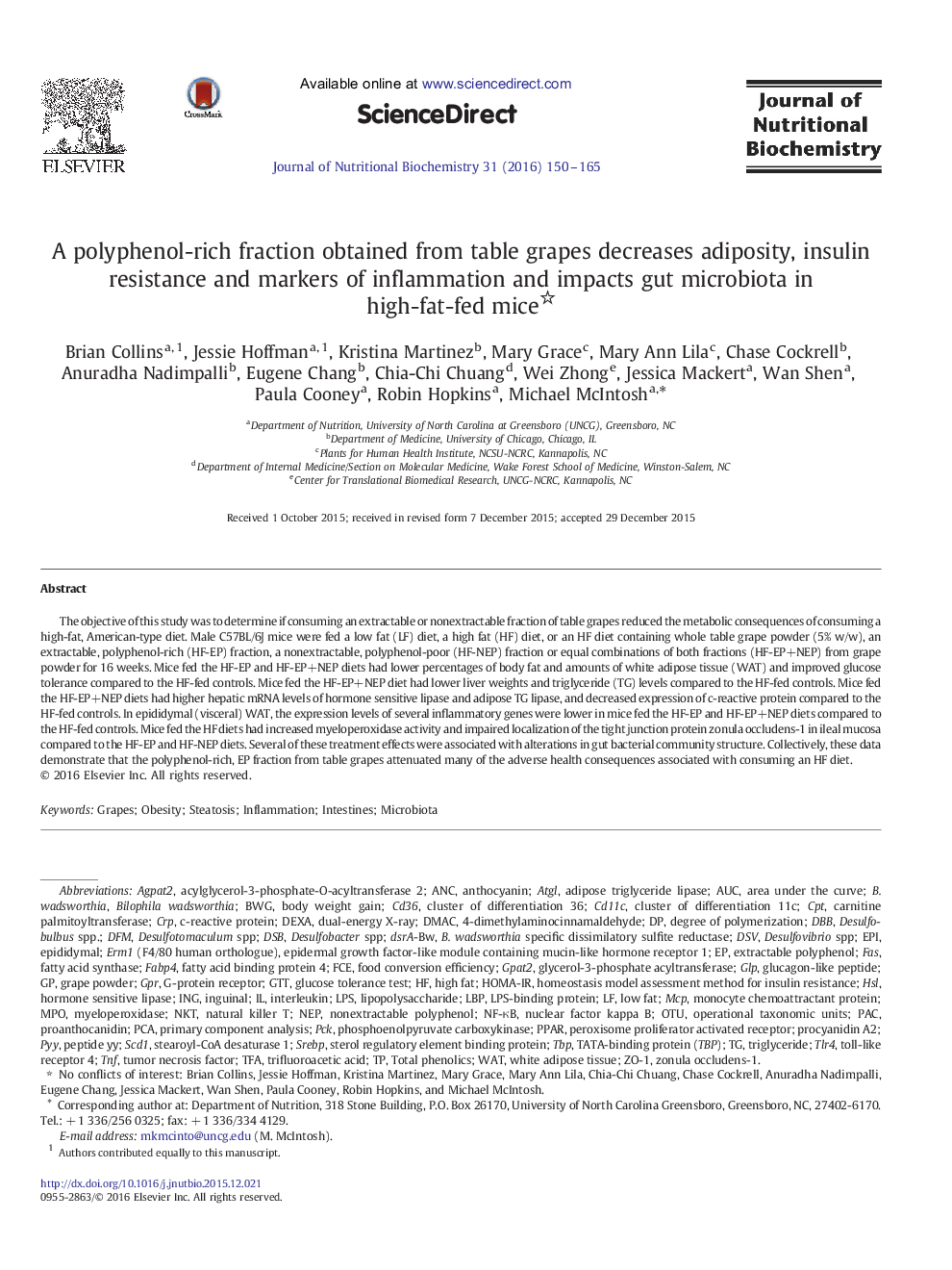| Article ID | Journal | Published Year | Pages | File Type |
|---|---|---|---|---|
| 1989561 | The Journal of Nutritional Biochemistry | 2016 | 16 Pages |
The objective of this study was to determine if consuming an extractable or nonextractable fraction of table grapes reduced the metabolic consequences of consuming a high-fat, American-type diet. Male C57BL/6J mice were fed a low fat (LF) diet, a high fat (HF) diet, or an HF diet containing whole table grape powder (5% w/w), an extractable, polyphenol-rich (HF-EP) fraction, a nonextractable, polyphenol-poor (HF-NEP) fraction or equal combinations of both fractions (HF-EP+NEP) from grape powder for 16 weeks. Mice fed the HF-EP and HF-EP+NEP diets had lower percentages of body fat and amounts of white adipose tissue (WAT) and improved glucose tolerance compared to the HF-fed controls. Mice fed the HF-EP+NEP diet had lower liver weights and triglyceride (TG) levels compared to the HF-fed controls. Mice fed the HF-EP+NEP diets had higher hepatic mRNA levels of hormone sensitive lipase and adipose TG lipase, and decreased expression of c-reactive protein compared to the HF-fed controls. In epididymal (visceral) WAT, the expression levels of several inflammatory genes were lower in mice fed the HF-EP and HF-EP+NEP diets compared to the HF-fed controls. Mice fed the HF diets had increased myeloperoxidase activity and impaired localization of the tight junction protein zonula occludens-1 in ileal mucosa compared to the HF-EP and HF-NEP diets. Several of these treatment effects were associated with alterations in gut bacterial community structure. Collectively, these data demonstrate that the polyphenol-rich, EP fraction from table grapes attenuated many of the adverse health consequences associated with consuming an HF diet.
